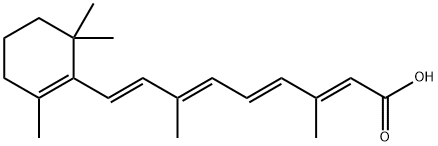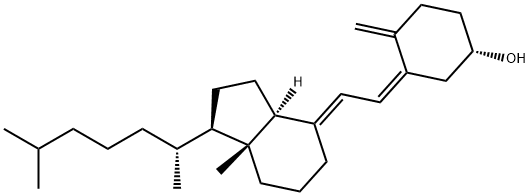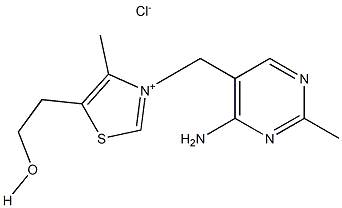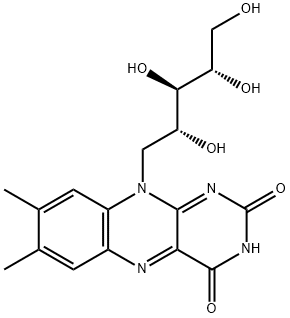Vitamin A
- CAS NO.:11103-57-4
- Empirical Formula: C20H30O
- Molecular Weight: 286.46
- MDL number: MFCD00001552
- EINECS: 234-328-2
- SAFETY DATA SHEET (SDS)
- Update Date: 2025-12-17 09:49:40

What is Vitamin A?
Chemical properties
Retinol acetate: pale-yellow crystals (mp: about 60 °C). Once melted retinol acetate tends to yield a supercooled melt. Retinol propionate: reddish-brown oily liquid. Retinol palmitate: a fat-like, light yellow solid or a yellow oily liquid, if melted (mp: about 26 °C).
History
The structure of vitamin A and some of the important derivatives are shown in Figure 1. The parent structure is all-trans-retinol [CAS: 68-26-8] and its IUPAC name is (all-E)-3,7-dimethyl-9-(2,6,6- trimethyl-1-cyclohexen-1-yl)-2,4,6,8-nonatetraen-1-ol. The numbering system for vitamin A derivatives parallels the system used for the carotenoids. In older literature, vitamin A compounds are named as derivatives of trimethyl cyclohexene and the side chain is named as a substituent. For retinoic acid derivatives, the carboxyl group is denoted as C-1 and the trimethyl cyclohexane ring as a substituent on C-9. The structures of vitamin A and β-carotene were elucidated by Karrer in 1930 and several derivatives of the vitamin were prepared by this group. In 1935, Wald isolated a substance found in the visual pigments of the eye and was able to show that this material was identical with Karrer’s retinaldehyde.
![Fig.1. Vitamin A and derivatives: retinol (1), retinyl acetate [CAS: 127-47-9] |(2), retinyl palmitate [CAS: 79-81-2] (3), and retinyl propionate [CAS: 7069-42-3] (4). Fig.1. Vitamin A and derivatives: retinol (1), retinyl acetate [CAS: 127-47-9] |(2), retinyl palmitate [CAS: 79-81-2] (3), and retinyl propionate [CAS: 7069-42-3] (4).](/NewsImg/2021-12-16/6377524733234351828546489.jpg)
The Uses of Vitamin A
vitamin A can act as a keratinization regulator, helping to improve the skin’s texture, firmness, and smoothness. Vitamin A esters, once in the skin, convert to retinoic acid and provide anti-aging benefits. Vitamin A is believed to be essential for the generation and function of skin cells. Continued vitamin A deficiency shows a degeneration of dermal tissue, and the skin becomes thick and dry. Surface application of vitamin A helps prevent skin dryness and scaliness, keeping the skin healthy, clear, and infection resistant. Its skin regeneration properties appear enhanced when combined with vitamin e. Vitamin A is a major constituent of such oils as cod liver and shark, and many fish and vegetable oils. See also retinol; retinoic acid; retinylpalmitate.
Definition
ChEBI: All-trans-retinol is a retinol in which all four exocyclic double bonds have E- (trans-) geometry. It has a role as a human metabolite, a mouse metabolite and a plant metabolite. It is a retinol and a vitamin A.
General Description
Yellow crystals or orange solid. Practically water insoluble.
General Description
The provitamin A carotenoids are obtained from plant sources and comprise some of the best sources of this vitamin. The provitamin As are found in deep green, yellow,and orange fruits and vegetables, such as carrots, spinach, broccoli, kale, collard and turnip greens, mangoes, apricots, nectarines, pumpkins, and sweet potatoes.
Vitamin A belongs to a class of compounds referred to as the retinoids, which consist of four isoprenoid units joined in a head-to-tail manner. All double bonds in the isoprenoid units are implied to be in the E (trans) configuration unless stated otherwise. Currently, the term retinoid is applied to retinol and its naturally occurring derivatives plus synthetic analogs, which need not have vitamin A activity. Vitamin A is currently used as a generic descriptor for all retinoids that exhibit the biological activity of retinol, the original substance identified as vitamin A. The term vitamin A1 and all-trans retinol have been used to refer to retinol whereas vitamin A2 was used to refer to 3,4-dehydroretinol.
Air & Water Reactions
Practically water insoluble.
Reactivity Profile
Vitamin A is light sensitive. Also air sensitive and heat sensitive. Reacts with strong oxidizing agents. Also can react with acids . Can react exothermically with reducing agents to release hydrogen gas.
Fire Hazard
Flash point data for Vitamin A are not available. Vitamin A is probably combustible.
Clinical Use
Vitamin A is used in the treatment of known or suspected vitamin A deficiency. Of course, vaccination is of prime importance; however, in underdeveloped countries where the rate of vaccination is low, vitamin A supplementation is a beneficial alternative.Retinoate analogs have been developed for use in the treatment of dermatological conditions such as psoriasis and acne.
Properties of Vitamin A
| storage temp. | -20°C |
| solubility | All retinol esters are practically insoluble in water, soluble or partly soluble in anhydrous ethanol and miscible with organic solvents. Vitamin A and its esters are very sensitive to the action of air, oxidising agents, acids, light and heat. Carry out the assay and all tests as rapidly as possible, avoiding exposure to actinic light and air, oxidising agents, oxidation catalysts (e.g. copper , iron), acids and heat; use freshly prepared solutions. |
| EPA Substance Registry System | Vitamin A (11103-57-4) |
Safety information for Vitamin A
Computed Descriptors for Vitamin A
New Products
Indole Methyl Resin tert-butyl 9-methoxy-3-azaspiro[5.5]undecane-3-carboxylate Boc-His(Boc)-OH 2-CTC Resin 4-Chloro-7-tosy1-7Hpyrrolo[2,3-d]pyrimidine 5,7-Dibromo-1H-indole 2,5-dichloro-N-hydroxy-4,6-dimethylpyridine-3-carboximidamide 2,2-Dimethoxy-7-azaspiro[3.5]nonane hydrochloride 4-chloromethyl-5-methyl-1,3-dioxol-2-one (DMDO-Cl) R-2-BENZYLOXY PROPIONIC ACID 1,1’-CARBONYLDIIMIDAZOLE 1,1’-CARBONYLDI (1,2-4 TRIAZOLE) N-METHYL INDAZOLE-3-CARBOXYLIC ACID 4-((2-hydroxyethyl)thio)benzoic acid 1-(TERT-BUTOXYCARBONYL)-2-PYRROLIDINONE Methyl 6-methylnicotinate 3-Pyridineacrylic acid tert-Butyl carbazate TETRAHYDRO-2H-PYRAN-3-OL 2-((4-morpholinophenylamino) (methylthio) methylene) malononitrile 3-(4-morpholinophenylamino)-5-amino-1H-pyrazole-4-carbonitrile 2,4-dihydroxybenzaldehyde 1,3-Diethyl-1,3-Diphenylurea Methyl 2-methylquinoline-6-carboxylateRelated products of tetrahydrofuran








You may like
-
 Pyridine 99.5% HPLC /UV SpectroscopyView Details
Pyridine 99.5% HPLC /UV SpectroscopyView Details
110-86-1 -
 Guanine , 99%View Details
Guanine , 99%View Details
73-40-5 -
 Piperazine Spot supply, best priceView Details
Piperazine Spot supply, best priceView Details
110-85-0 -
 Potassium Hydroxide 90%View Details
Potassium Hydroxide 90%View Details
1310-58-3 -
 Dibutyl PhthalateView Details
Dibutyl PhthalateView Details
84-74-2 -
 Imidazole Spot supply, competitive priceView Details
Imidazole Spot supply, competitive priceView Details
288-32-4 -
 Octadecyl 3-(3,5-di-tert-butyl-4-hydroxyphenyl)propionate 98% (GC)View Details
Octadecyl 3-(3,5-di-tert-butyl-4-hydroxyphenyl)propionate 98% (GC)View Details
2082-79-3 -
 Thiourea 99% ARView Details
Thiourea 99% ARView Details
62-56-6
